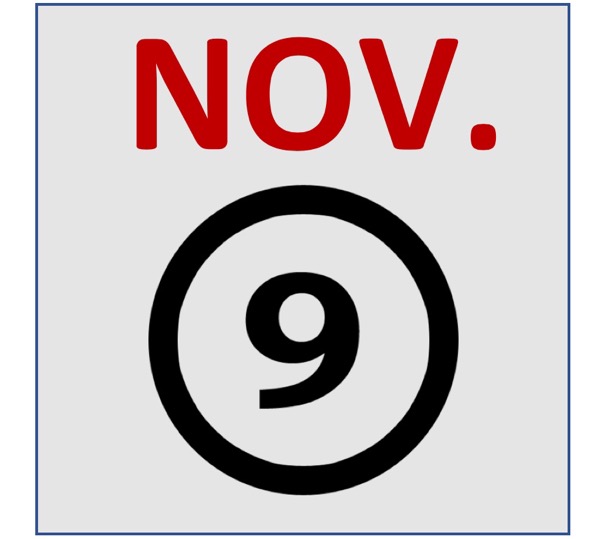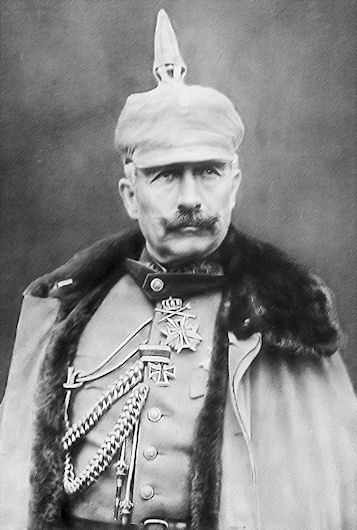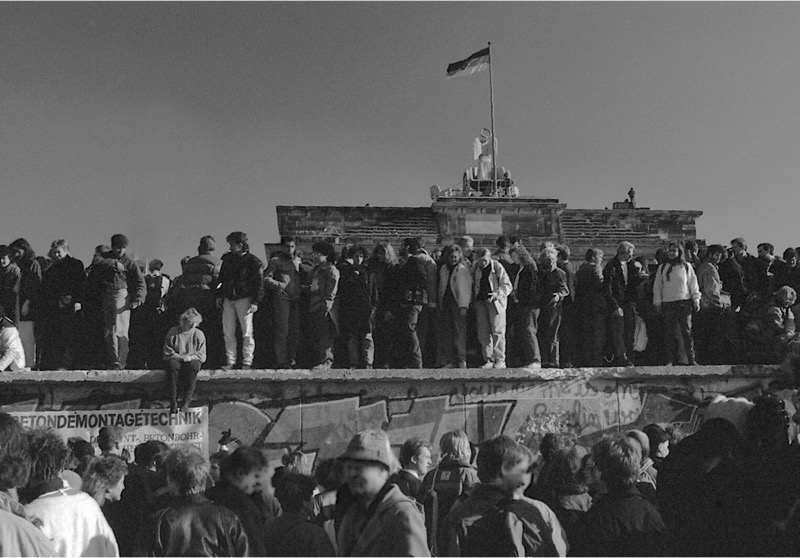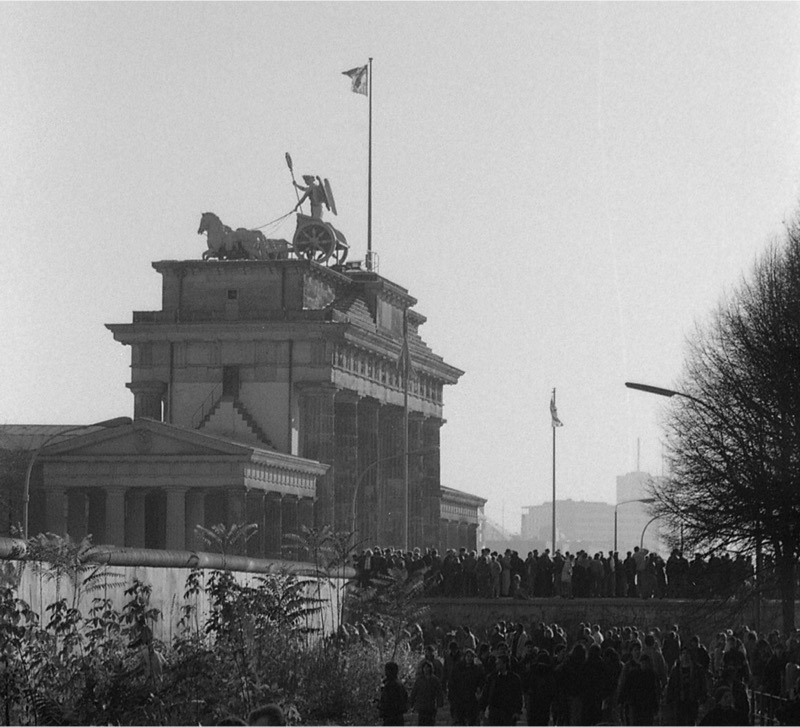The Odds of 9 November or a Fateful Day for Germany
November, the month when the busy season for guides begins to fade is a month of remembrance, particularly here in Germany. There is All Saints, National Day of Mourning Day, the Day of Repentance and Prayer and „Totensonntag“, the Sunday before Advent when the dead are commemorated.
Four times in the 20th century 9 November was a day (or night) to remember. 2018 marks the centenary of one, the 80th anniversary of another. And all four are linked to each other.
9 November 1918 – End of WWI
It is now a hundred years ago that in the revolutionary days before the end of WWI the last German emperor, Kaiser Wilhelm II, was washed away from power. The mutiny among navy and army staff in Berlin and other places, the insufficient supply of food for the public and a general grumble in many parts of the country left no more room for the emperor and his regime. The military and the leaders of the aristocracy forced him to abdicate. So „Willy“ packed his things (a mere 23 boxcars with just the bare necessities!) to spend the rest of his days chopping wood in his place of refuge, Huis Doorn in the Netherlands. Germany signed the armistice agreement two days later, hence Remembrance Day in the Commonwealth.
As it is often the case, one thing leads to another: The war ended with the „Treaty of Versailles“. In this treaty Germany was made the main culprit and assigned to losing much of his military, territory and forced to pay enormous reparations. All this was regarded as extremely unjust by large parts of the German public, first and foremost however, by the military. Among this crowd was young man named Adolf Hitler. Having to deal with his frustration about the outcome of the war, his ambition was to become an artist. After being turned down by the Vienna art school he decided to enter the field of politics instead. Step by step he got in touch with extremely conservative and reactionary circles, where his oratory skills, i.e. the capacity to stir up a mob, were appreciated.
9 November 1923 – Beer Hall Putsch
Germany had lived through tough times for five years. Political unrest and extremism, street shootings and economic uncertainty combined with a decline of the currency. To pay the reparations the government decided to start the printing press and inflation rose to staggering heights. In all this upheaval Hitler with his small Nazi party and some „old boys“ from the Reichswehr, the German army, attempted to seize power in Munich, the capital of the state of Bavaria. According to the legend nurtured by reactionary parts of society, Germany had not been defeated on the battlefield but instead had received „a stab in the back“ from leftist revolutionaries at home. Therefore 9 November was labelled a day of treason and shame that was to be rectified and turned into a day of triumph and retaliation by the uprising. Starting at the Bürgerbräukeller, a sizeable beerhall, the coup quickly ended in the centre of Munich, stifled by the Bavarian police and military. Germany was not yet ready and willing to give in to the Nazis.
But we know what followed: the trial against Hitler was a joke. Sentenced to five years of confinement under comfortable conditions he served only about eight months. He utilized them to write his book „Mein Kampf“ (My Struggle) to let the world know about his ideas.
These were the preliminaries to January 1933: the seizure of power in Germany by the Nazis. What followed was on ongoing development of a system of political terror, persecution of political opponents, of ethnic and social minorities. Jewish citizens became major targets of ever mounting deprivation and humiliation.
9 November 1938 – Kristallnacht
This year marks the eightieth anniversary of the event that is seen by many as the inception of the holocaust. Two days earlier a 17-year-old Jewish lad named Herschel Grynszpan had tried to assassinate the German ambassador in Paris. His intention was to draw international attention to the fate of his parents, stuck with thousands of others at the German-Polish border in abominable conditions. The reason for this was a political row between the two countries. He actually shot a staff member named Ernst vom Rath, who died on 9 November. The retaliation, now meticulously planned by the Nazi authorities, was carried out nationwide by SA paramilitary troopers in cooperation with German civilians. Hundreds of synagogues, thousands of businesses and homes of Jewish citizens were vandalized and looted, Jews were chased through the streets, several hundred were murdered and 30,000 Jewish men were taken to concentration camps. In the aftermath the Jews themselves were made to pay for the clean-up of the damage others had done to them. If no previous signal was an obvious enough indication of what was to come, then this day clearly marks the way into the abysmal darkness of the Nazi era.
Less than a year later German troops marched into Poland, the beginning of World War II. About 55-60 million people (among them ca. 6 million Jews) had died by May 1945, when the war ended in Europe. Germany and its capital Berlin were divided among the victors USA, UK, France and Soviet Union into zones of control. Out of the western zones emerged the Federal Republic of Germany (West), out of the Soviet zone the German Democratic Republic (East). The European Recovery Program, also known as the Marshall Plan, helped West Germany to a rather swift and sound economic comeback. A liberal democratic political system was established and the country was integrated into NATO and other international organisations.
In East Germany however, industrial sites and infrastructure were dismantled by the Soviets as a form of reparations. Furthermore, a socialist policy was implemented here, turning the GDR a Soviet satellite state. Both parts of Germany were deeply involved in the conflict that came to be known as the „Cold War“. Several incidents in East Germany incited people to „vote with their feet“, i.e. flee to West Germany. As a result, the border between the two German states was closed in 1952 by the East Germans. But a loophole remained: Berlin. The city was entirely located inside East Germany. The eastern part had become the capital of the GDR, the western half remained an appendix of West Germany with a constant presence of US, British and French military. In order to prevent East German citizens from escaping through this loophole West Berlin, the East German government decided to build a wall around it. The year was 1961.
9 November 1989 – Fall of the Berlin Wall
In the years following 1961 the relations between the superpowers USA and USSR gradually improved and so did the relations between the two Germanys. Most of us, and I mean people living on both sides of the „Iron Curtain“, came to terms with that odd barrier. For people from the west, it was no big deal, as we could travel the world. The people in East Germany were confined to their side. But of course, the divide remained a permanent pain in the back for many and a salient item on the political agenda. Finally, it was the deteriorating economic situation that got the GDR into a dead end. Realizing this, great numbers of citizens put an increasing pressure on the government, be it with mass demonstrations – a rally of about half a million people took place in East Berlin on 4 November -or be it by leaving the country through Czechoslovakia or Hungary, who had already opened their borders in summer of 1989. Something was about to change…
So finally the last of the four 9 Novembers had something good about it, a historic event without any violence and bloodshed. Germany was reunited about a year later on 3 October 1990. Most other „Eastern bloc countries“ including the Soviet Union could get rid of their communist government fairly soon after.
Posted by our guide
Klaus Kannen
Pictures
Picture 1: Wiki Commons, Author: Gummerus
Picture 2: Bundesarchiv, Bild 102-00344A / Heinrich Hoffmann / CC-BY-SA 3.0
Picture 3: Bundesarchiv, Bild 146-1970-083-42 / CC-BY-SA 3.0
Picture 4+5: Klaus Kannen







No Comments